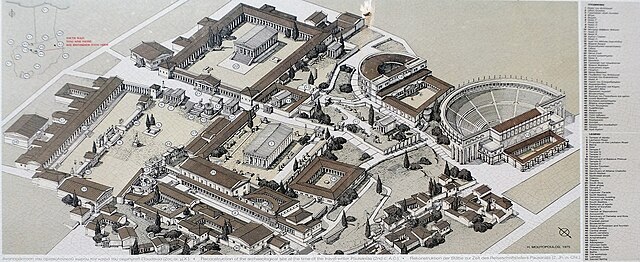The Diolkos was a paved trackway near Corinth in Ancient Greece which enabled boats to be moved overland across the Isthmus of Corinth. The shortcut allowed ancient vessels to avoid the long and dangerous circumnavigation of the Peloponnese peninsula. The phrase "as fast as a Corinthian", penned by the comic playwright Aristophanes, indicates that the trackway was common knowledge and had acquired a reputation for swiftness.
The Isthmus with the Canal of Corinth close to where the diolkos ran.
Excavated western end close to the Gulf of Corinth
Mooring place
Image of a ship on Attic black-figure pottery (c. 520 BC). This is the sort of boat that the Diolkos may have transported in Periander's time.
Corinth was a city-state (polis) on the Isthmus of Corinth, the narrow stretch of land that joins the Peloponnese to the mainland of Greece, roughly halfway between Athens and Sparta. The modern city of Corinth is located approximately 5 kilometres (3.1 mi) northeast of the ancient ruins. Since 1896, systematic archaeological investigations of the Corinth Excavations by the American School of Classical Studies at Athens have revealed large parts of the ancient city, and recent excavations conducted by the Greek Ministry of Culture have brought to light important new facets of antiquity.
Reconstruction of the city of Corinth
Image: Ravel 1008.2
View of Ancient Corinth
Apollo Temple has been built in Doric style on the ruins of earlier temple, being a good example of peripteral temple, supported by 38 columns, 7 of which are still in place.








